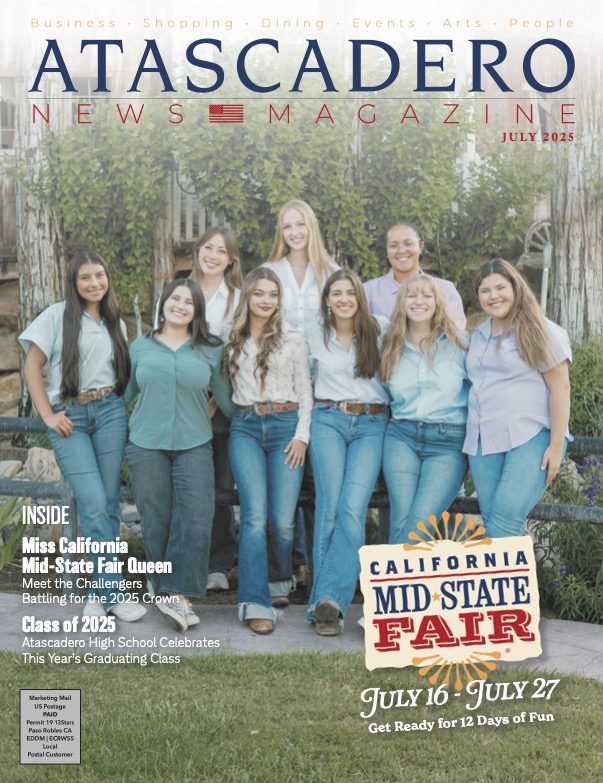NORTH COUNTY — The Paso Robles Pioneer Museum will host the Barbed Wire and Collectible Show on Friday, March 6 through Saturday, March 7. Located at 2010 Riverside Avenue, the museum is home to one of the most extensive collections of barbed wire in the world. Only three other museums claim they have more thorny lines, but the closest one is in Texas.
“It’s said that we have one of the larger collections this side of the Rockies,” said museum docent Bonnie Nelson.
The California Barbed Wire Collectors Association started more than 50 years ago in Paso Robles. Two friends, Paso Chamber of Commerce President Swift Jewell and Paso Robles Station Manager of the Southern Pacific Railroad Bud Park, decided to invite other collectors to joing them in their unique hobby. The two held a conference at the fairgrounds in Paso for barbed wire enthusiasts to learn more of the history and display their collections. The Swift Jewell Barbed Wire Collection (the combined collection of these two friends) is maintained by the CBWCA and is on permanent display at the Paso Robles Pioneer Museum.
Member of the CBWCA and the International Antique Barbed Wired Society, Raymond Eide, talked to the Paso Robles Press and gave a brief history of the prickly steel and the significant impact it made on the development of the United States.
“Barbed wire is not just barbed wire,” Eide said. “You look around this show, and you’ll see what I’m talking about.”
The Homestead Act of 1862, ratified by President Abraham Lincoln, gave American citizens and future citizens the right to claim up to 160 acres of public land. If the person staking a claim could occupy the land, build a dwelling, and cultivate the property for five years, they would be granted ownership after paying a small registration fee.
Eide said that the special fencing made farming on the prairie feasible. With a lack of wood to build fences and rocks to build a wall, the invention of barbed wire allowed people to keep livestock in and wildlife out at a cost-effective price. Lucien B. Smith of Ohio is credited as the inventor and received a patent in 1875 for the new type of fencing.
“It changed people’s lives,” Eide said. “It improved their lot in life in many different ways. People don’t realize how much influence barbed wire had on this country; the development of it and the settling of it. We try to teach people at our shows a little bit about that history and maybe spark a little interest in them.”
Eide said that the wire spurred fights between cattle ranchers and farmers. Being used to grazing the open lands, ranchers were stopped by fences strung up along the countryside. Ironically, Native Americans also had the same complaint about public land utilized for private purposes. Edie said that small scale “wars” would break out between ranchers and farmers with people cutting wires to cross land and landowners trying to defend their property.
Now retired, Eide worked for 50 years as a land surveyor. During his career hiking through the American landscape, he found himself coming across various pieces of barbed wire and so realized that not all of the fencing material was alike. Eide said that there are more than 2,000 variations of barbed wire with more discovered each year. Eide started collecting the bits of wire and eventually found and joined the CBWCA.
“I have a couple of hundred different kinds now,” said Eide. “That’s nothing, that’s a drop in the bucket. People have been collecting this since the 60s, and the association has been doing it for 30 to 40 years.”
The success of the fencing material did not go unnoticed. With wire being sold by the mile, competitors quickly joined in with their own brand and style of cable to make their fortune. To make a quick buck, thievery wasn’t out of the question either. In order to protect their investment, railroads developed their own style of wire. Acting as a brand, the wire stolen could be easily identified as stolen property. There were also barbed forgeries, what Eide calls “moonshine wire,” where people would ignore patents and steal a design and sell it for themselves.
Eide said that the twisted history of barbed wire makes for an abundance of various versions on the fencing. Sold in 18-inch lengths, strands of metal can go from $0.25 to $500 depending not only their rarity but the intricacy of the design and how eye-catching it is to collectors.
“You can pay $500 for a piece of wire called the Dodge Star, which is rare…” Eide said, “but there’s a lot of $100, $200, $300, $400 wires too.”














